I Come From There
By Mahmoud Darwish
I come from there and I have memories
Born as mortals are, I have a mother
And a house with many windows,
I have brothers, friends,
And a prison cell with a cold window.
Mine is the wave, snatched by sea-gulls,
I have my own view,
And an extra blade of grass.
Mine is the moon at the far edge of the words,
And the bounty of birds,
And the immortal olive tree.
I walked this land before the swords
Turned its living body into a laden table.
I come from there. I render the sky unto her mother
When the sky weeps for her mother.
And I weep to make myself known
To a returning cloud.
I learnt all the words worthy of the court of blood
So that I could break the rule.
I learnt all the words and broke them up
To make a single word: Homeland...
--------
It was raining by the time we finished breakfast, so we left early for The Mariners' Museum in Newport News, and it was a good thing we did because we spent more than four hours there. This is a fantastic museum with huge galleries devoted to the history of boating on the Chesapeake Bay, the Age of Exploration and the development of the steamship, plus model tall ships and nautical art, but the major attractions are Civil War-era -- in particular, the turret of the USS Monitor, most of the rest of which is still sunk off the Outer Banks where the ship went down.
It's hard to pick an exact date for the start of the Age of Fighting Sail, but easy to name the end: March 9, 1862, when the Monitor met the CSS Virginia and it became obvious that even the most advanced wooden ships didn't stand much of a chance against a steam-powered ironclad ship. The Mariners' Museum has several galleries devoted to this event, since it's local history and pieces of both ships are in the collection; there's a slide-show-in-the-round about the battle (narrated by Salome Jens of Deep Space Nine), a multi-screen movie about the sinking of the Monitor in a winter storm and a short film about the discovery of the ship and raising of the turret. Then there is a scale model of the ship, several galleries where people can attempt to maneuver the frigate on a computer, see the inside of the ship during the Battle of Hampton Roads and walk through a replica of the turret as it looked when brought up from the bottom of the sea. The original turret is in a conservation facility visible through windows, kind of like where the Mary Rose is being preserved in Portsmouth, UK.
As if that weren't enough, the museum has a temporary exhibit on "The Nelson Touch" first opened for the 200th anniversary of the Battle of Trafalgar. The gallery is organized around Nelson's actions at the battles of Cape St. Vincent, Copenhagen, the Nile and Trafalgar and how they entered the popular imagination as well as how they affected military strategy (I did not know until today that "turn a blind eye" came from Nelson's refusal to see the signal to withdraw being sent by his admiral, but this exhibit had little 19th century action figures and book illustrations of the incident). The museum also has many of the features of other domestic maritime museums, from knot-tying practice to seafood harvesting equipment to USS Constitution memorabilia to the rise of naval aviation (particularly important in this region). We had lunch there but didn't even begin to explore the surrounding marshes and hiking trails, nor did we spend a proper amount of time in the small craft center, scientific collections, art galleries or model ship rooms.
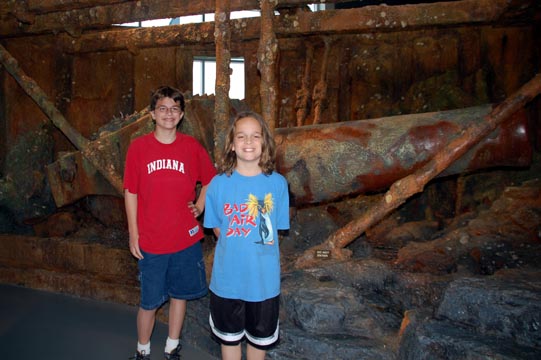
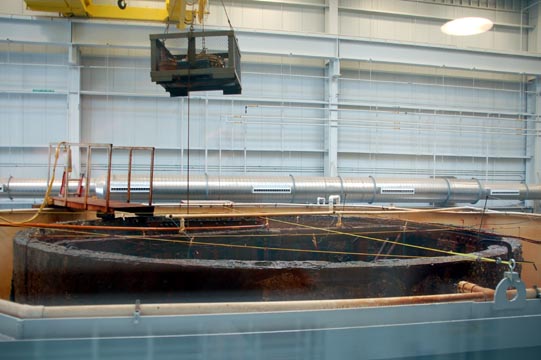
The real thing is in a chemical bath in a conservation facility attached to the building.
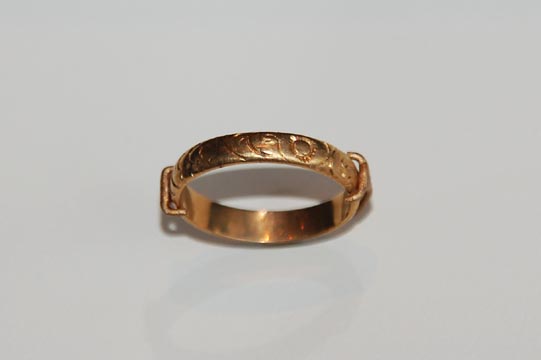
This ring was found on the hand of one of the sailors whose remains were inside the turret. There are no initials among the carvings, so the owner has not been identified.
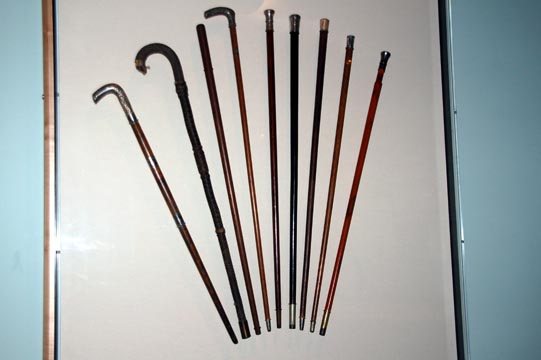
These canes were all made with wood and metal from the Virginia (previously the USS Merrimack) and the Monitor, several owned by military officers.
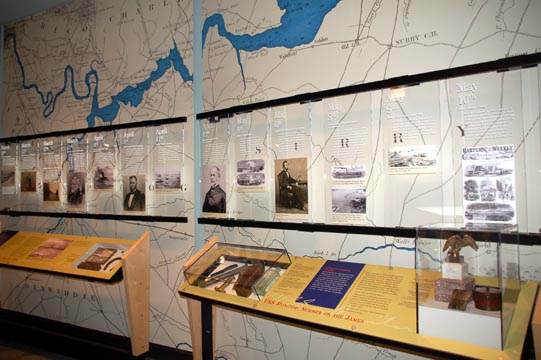
This gallery is devoted to the development of the Monitor in 1862, from her launch at the start of the year to her sinking on December 31st, and how naval warfare changed with her.
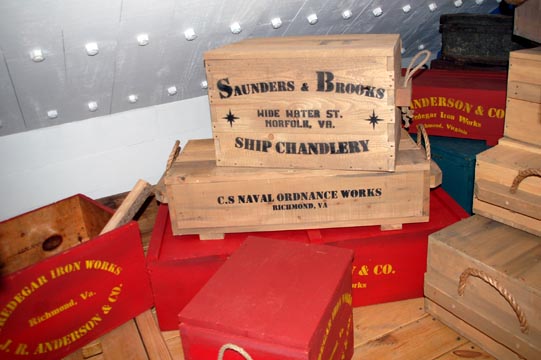
The Virginia is not neglected either; this is a partial scale model with interior exhibits, many focused on local Virginia economy and the shift from US to Confederate loyalties. Even more than at Gettysburg, the exhibits went out of their way to portray the Southern fighters as patriots in their own way.
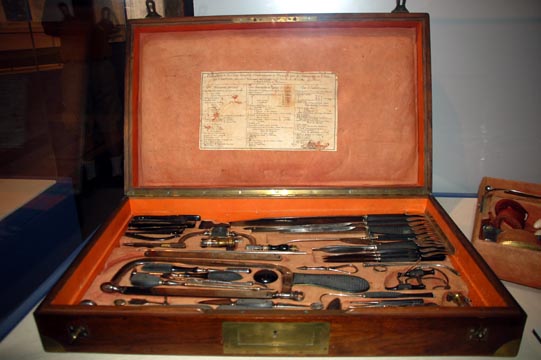
From the Nelson-era exhibit, a surgeon's kit. (There's no doubt which side Stephen Maturin would have supported in the US Civil War.)
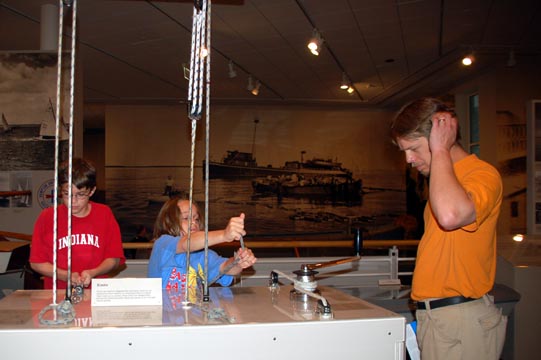
In the Chesapeake Bay gallery, the boys try their hands at knot-tying.
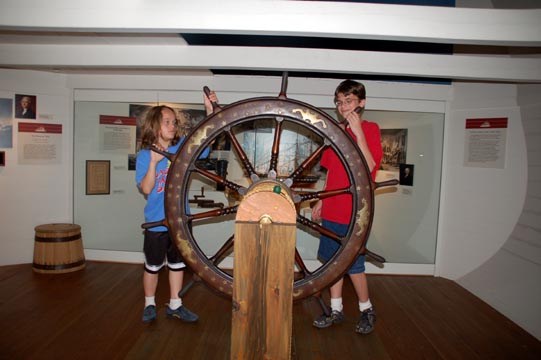
At a ship's wheel in the gallery on US Revolution-era ships, including the Constitution and the Bonhomme Richard.
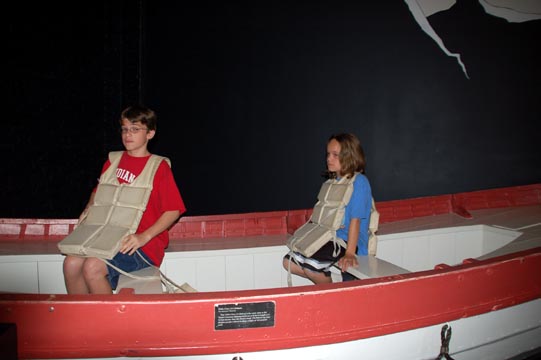
And sitting in a 1930s Class 1A lifeboat like those on the Titanic.
In the late afternoon we went back to Virginia Beach, but it was still overcast and the kids' legs were stinging from a combination of goosebumps, salt water, sunblock and chlorine from the pool, so after a bit of wave-jumping and digging for sandcrabs (we saw a great many and I found a shark's tooth, too), we got dressed and walked more than ten blocks trying to decide what we wanted for dinner, only to opt for going back to the hotel and finishing the sandwich meats and hummus we had brought for lunches and hadn't finished. Then we went out for ice cream as all the local musical acts were taking up their positions on street corners and walked briefly on the beach. I am very sorry to be leaving but younger son has an orthodontist appointment at the end of the week so there's no help for it! Have a wonderful Litha/Midsummer/Solstice!

No comments:
Post a Comment